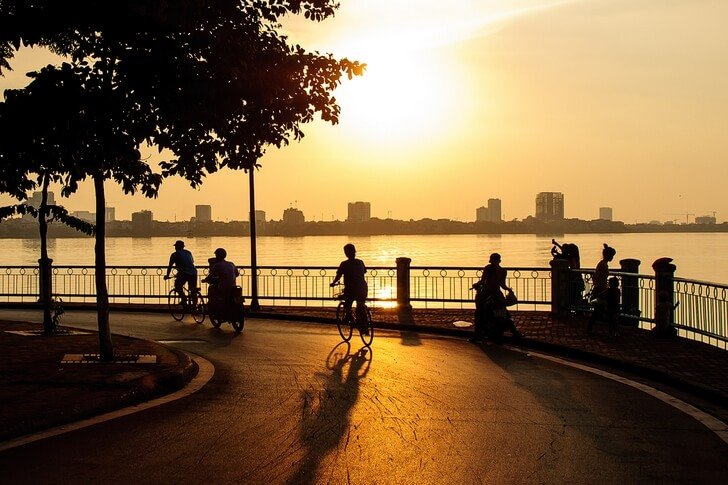Hanoi is a city with a unique flavor, a place where French, Chinese and Vietnamese traditions coexist harmoniously. It was founded in the distant XI century and during this time managed to visit the capital of several state entities. Today it is a modern, developed metropolis, living at a frantic pace, but maintaining an inextricable link with its rich past.
Tourists come to Hanoi to look at the monuments of Vietnamese architecture and Buddhist pagodas, visit museums and the traditional water puppet theater, enjoy the beauty of the capital's parks and plunge into the atmosphere of the Asian metropolis. As a rule, travelers spend several days here, and then go to the ocean coast in Central or South Vietnam.
What to see and where to go in Hanoi?
The most interesting and beautiful places for walking. Photos and a short description.
- Old quarter 36 streets
- Hanoi citadel
- Flag tower
- Mausoleum of Ho Chi Minh
- Presidential palace
- Museum of Vietnamese Women
- Vietnam Museum of Ethnology
- Vietnam Museum of Military History
- Art Museum
- Hanoi ceramic mosaic
- Hanoi Opera House
- Puppet theater on the water
- Hanoi Cathedral
- One Pillar Pagoda
- Chan Quoc Pagoda
- Temple of Literature
- Hanoi Hilton
- Long Bien Bridge
- Hoan kiem lake
- Lake Tay
Old quarter "36 streets"
The area was founded by representatives of 36 merchant guilds in the 12th century on the site of a floating market, which is why it has such a name. Its streets still bear the names of those goods that were sold here in the past: Copper, Silk, Silver, etc. The quarter is built up with old two-story houses with narrow facades, typical of the Vietnamese urban architecture of the past centuries. Here, as before, there is a brisk trade in everything in the world.

Hanoi citadel
A complex of palaces that belonged to the ruling dynasty of Vietnam. It is believed that it began to be erected in the 11th century. By the end of the 19th century, many buildings were in ruins due to the war with France. Systematic excavations began several decades ago. In 2010, the citadel was added to the UNESCO World Heritage List. Among all the buildings of the complex, the 34-meter Znamnaya (Flag) tower, built in 1812, stands out.

flag tower
One of the few architectural monuments of Hanoi that survived during the wars with the French. It is the latest building of the Hanoi Citadel and is an example of Vietnamese pre-colonial architecture. In the 19th century it served as a military observation post. Today, the Flag Tower is considered a symbol of the city. Together with the banner, its length exceeds 40 meters.
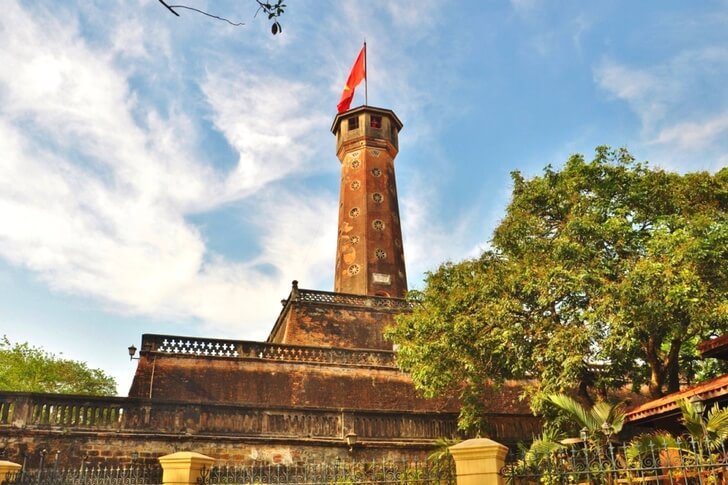
Mausoleum of Ho Chi Minh
Ho Chi Minh is a statesman, the first president of North Vietnam and the founder of the Communist Party. Despite the fact that after the death of the leader bequeathed himself to be cremated, his successor decided to embalm the body. After the end of the war in 1973, a mausoleum was erected for the burial of the leader. The Soviet specialist G. Isakovich was the chief architect of the building (he had previously worked on Lenin's mausoleum).

Presidential palace
The official residence of the President of Vietnam, built at the beginning of the 20th century. At first, the building served as the office of the viceroy of French Indochina. The building was built according to the design of the architect A. G. Vildieu. For the sake of the palace, they even demolished an ancient architectural monument - a thousand-year-old pagoda that previously stood on this site. You can’t go inside the residence, but you can walk through the palace gardens.

Museum of Vietnamese Women
The exhibition opened in 1987 thanks to the initiative of the Vietnamese Women's Union. Today it is considered one of the most popular in Hanoi. The collection is located on four floors. It consists of various exhibits that tell about the life and fate of a woman from the most ancient times to the present. Items were collected for more than 10 years from all over the country. The front hall of the building is decorated with the statue "Mother of Vietnam" - the symbol of the museum.

Vietnam Museum of Ethnology
The collection is dedicated to the culture and life of 54 nationalities (ethnic groups) living in Vietnam. Here you can see ceremonial items, costumes, traditional dwellings, decorative and applied arts. The museum opened in 1997 in a building designed by Ha Duc Lin. There are so many exhibits that it can take a whole day to see the entire exhibition.
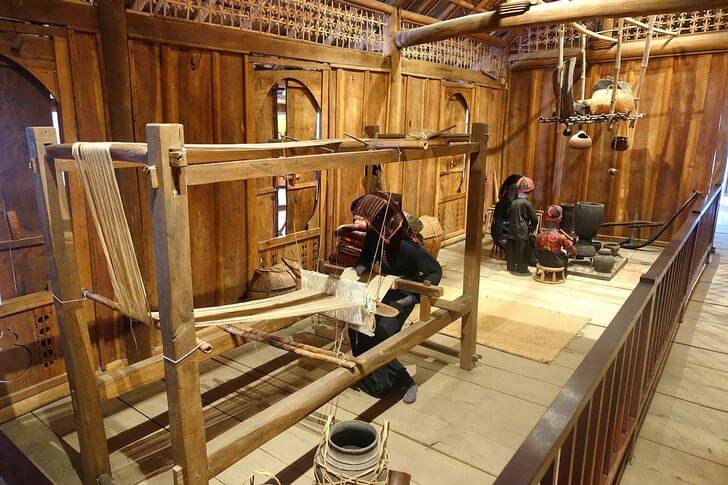
Vietnam Museum of Military History
The exposition of the museum is made up of samples of Chinese, Soviet, French and American military equipment, as well as weapons, documents and objects that tell about the development of the Vietnamese armed forces. The museum opened in 1959 at the initiative of Ho Chi Minh. It was preceded by various thematic exhibitions that were held to maintain the morale of the soldiers. The museum is located on the territory of the Royal Citadel.
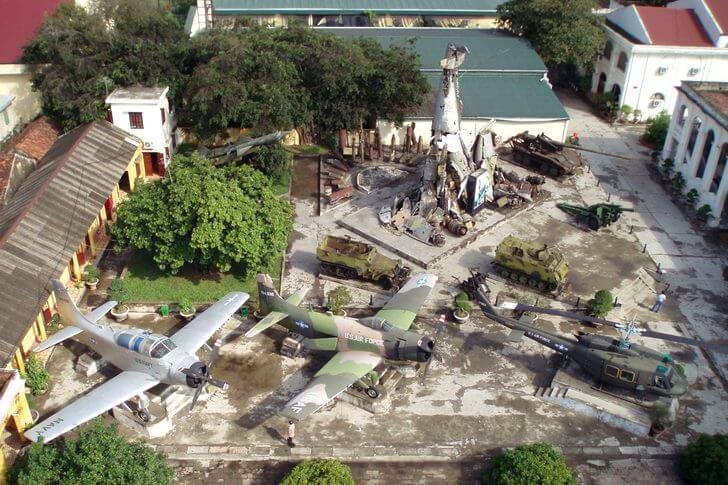
Art Museum
The collection is entirely dedicated to Vietnamese culture. On three floors of the building there are paintings, samples of temple sculpture, traditional lacquer painting, wooden products, drawings on rice paper, national costumes and other exhibits. The collection will be of interest to connoisseurs of art, as the works of eminent Vietnamese masters are exhibited here.

Hanoi ceramic mosaic
A long wall to the east of the Lake of the Returned Sword, covered with colored mosaics. It stretches for 4 km. For such an impressive size, the structure was included in the Guinness Book of Records. The wall began to be created in 2007, the best masters of the country, as well as foreign specialists, worked on it. The drawings are plots from legends, children's pictures, everyday scenes and images of historical sights.

Hanoi Opera House
The theater building was built in the classical colonial style at the beginning of the 20th century. The architects took the Paris Opera Garnier as a model. At the invitation of the French administration, artists from Europe often came here on tour. During the struggle for independence, the theater became a venue for political meetings. In 1997, the building was restored, after which the theater became the cultural center of the country.
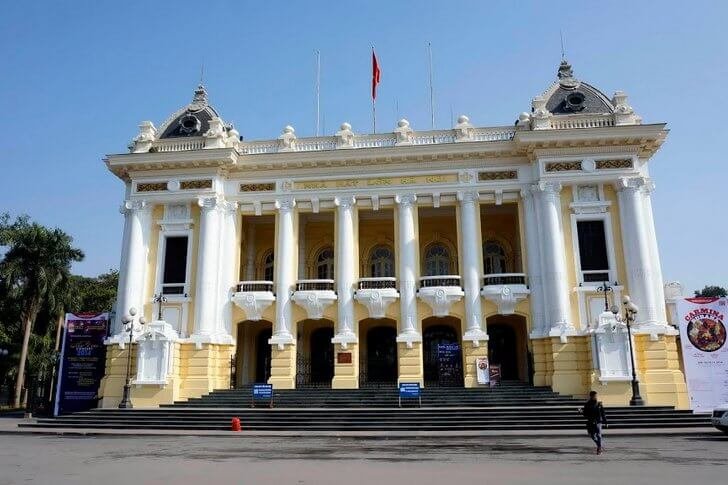
Puppet theater on the water
Puppet shows on the water came up with Vietnamese peasants who worked in the rice fields. In order to somehow entertain themselves after a hard day's work, they showed scenes with wooden puppets, standing waist-deep in water. Over time, a whole genre grew out of this simple fun. Performances in the puppet theater show all the diversity of Vietnamese culture. As a rule, they are accompanied by singing and music.
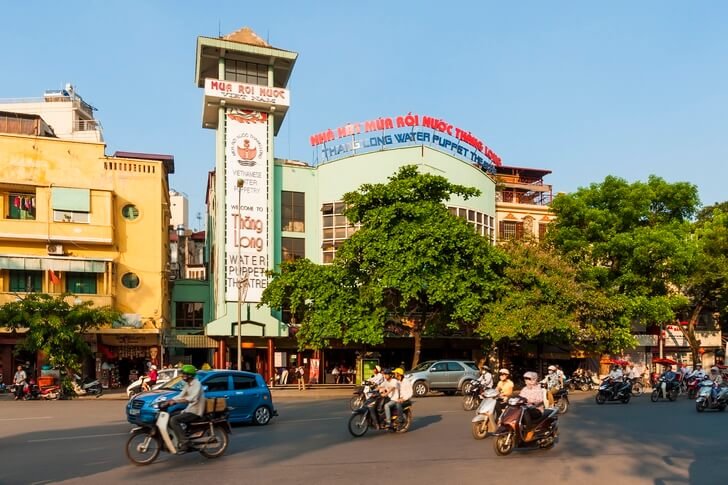
Hanoi Cathedral
The temple was built at the end of the 19th century in neo-gothic style. As you might guess, the appearance of the cathedral resembles the outlines of French churches. It is decorated in the architectural traditions of European religious buildings. After the liberation of Vietnam, the temple was closed due to persecution of the Catholic Church. Its rediscovery took place in 1990. Over time, the walls of the building have darkened due to industrial emissions, but inside it has retained its original appearance.

"One Pillar Pagoda"
Buddhist shrine, which is considered one of the most revered in Hanoi and throughout Vietnam. She stands on a single wooden pole. Previously, the building was surrounded by other religious buildings. The pagoda was built by order of Emperor Lee Thai Tong in the 11th century. Thus, the ruler thanked heaven for the long-awaited heir. The shape of the building resembles a lotus flower in the middle of a lake.
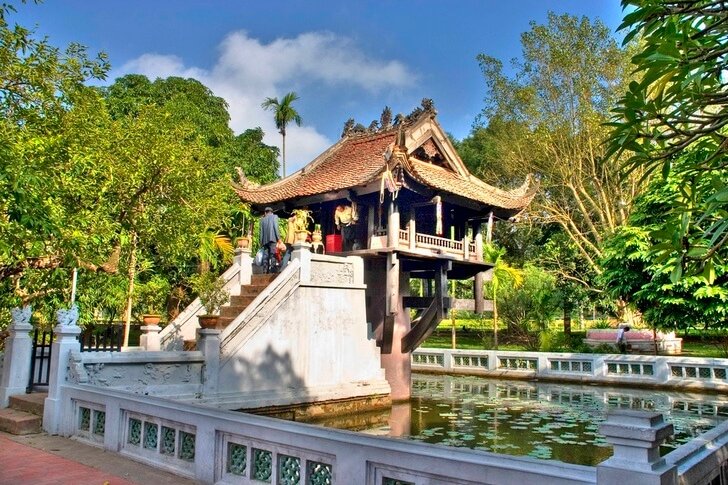
Chan Quoc Pagoda
The temple is the oldest in Hanoi. It is believed that it was erected in the 6th century by the will of Emperor Li Nam De (this ruler delivered the country from the claims of China). In the 17th century, the pagoda was moved to another place - to the island of the Golden Fish. In 1815, restoration work was carried out. The structure consists of a central tower, a gate and a guest room. Near the temple grows a bodhi tree, presented to Hanoi by the Indian Prime Minister in 1959.
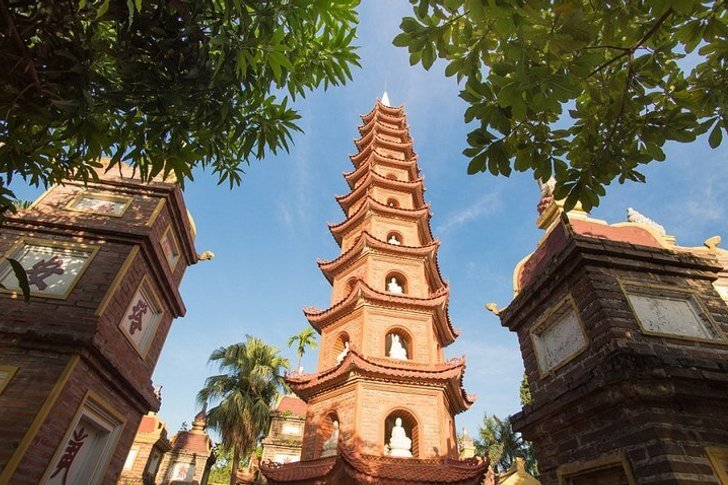
Temple of Literature
The building was built in the 11th century under the emperor Li Thanh Tong, who immensely admired Confucius and his philosophy. In tribute to this thinker, as well as to other equally worthy sages, the ruler decided to build the Temple of Literature. Almost immediately after the completion of construction, an institute was opened at the institution, where the children of officials, who demonstrated high intellectual abilities, began to study.

"Hanoi Hilton"
The former prison of Hoa Lo, and today it is a museum and tourist site. The building was built under the French in the 19th century to house political prisoners caught opposing the colonial authorities. During the war with the United States in the 20th century, American soldiers were captured in the building (the most famous prisoner is Senator John McCain). In the 1990s, almost the entire complex was demolished, and a museum exposition was placed in the remaining guardroom.

Long Bien Bridge
Hanoi has a huge number of rivers, canals and ponds. The name of the city itself translates as “surrounded by water”. The Long Bien Bridge, spanning the Red River, was built in the late 19th and early 20th centuries according to the design of a French architect. During the struggle for independence, rice was transported through it for the Vietnamese army, which contributed to the victory of the latter over the occupying forces.
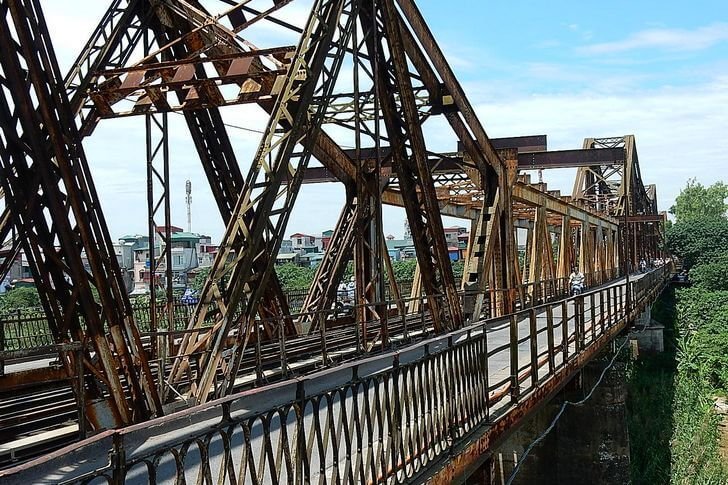
hoan kiem lake
Other well-known names for the reservoir are "Lake of the Returned Sword" and "Lake of Green Water". A legend about Emperor Le Loyu, who rebelled against Chinese rule, is associated with him. Allegedly, a golden tortoise appeared to the ruler here and gave him the Thuan Thien sword, with which he defeated the armies of the Celestial Empire. After the victory, Le Loy, at the request of the same turtle, returned the weapon back.
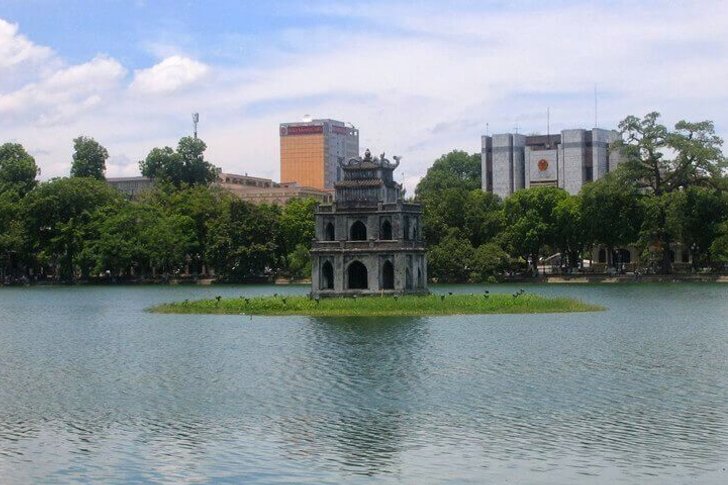
Lake Tay
A body of water in the center of Hanoi with a coastline of about 17 km, making it the largest in the Vietnamese capital. There are many stories associated with this place. Today Lake Tey is a large recreational area. Around it are gardens, parks, terraces, attractions, hotels, restaurants and other establishments. Also here are the Kuant Thanh Temple and the 4th century Tran Quoc Pagoda. The lake is very popular with tourists.
